#Philosophy of Science
Explore tagged Tumblr posts
Text
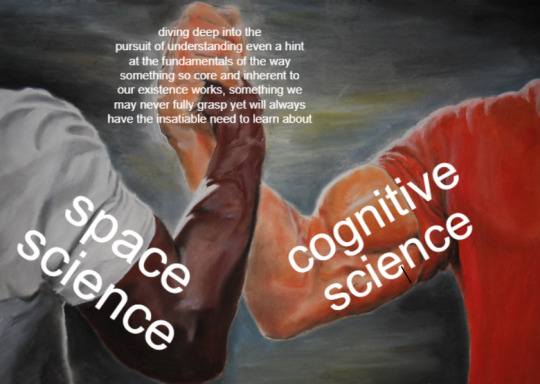
#science#women in stem#academia#stem#stemblr#space science#physics#astrophysics#astronomy#quantum mechanics#general relativity#cognitive science#psychology#neuroscience#cognitive neuroscience#philosophy of science#stem romanticism#stem memes#physics memes#science memes#neuroscience memes
393 notes
·
View notes
Text
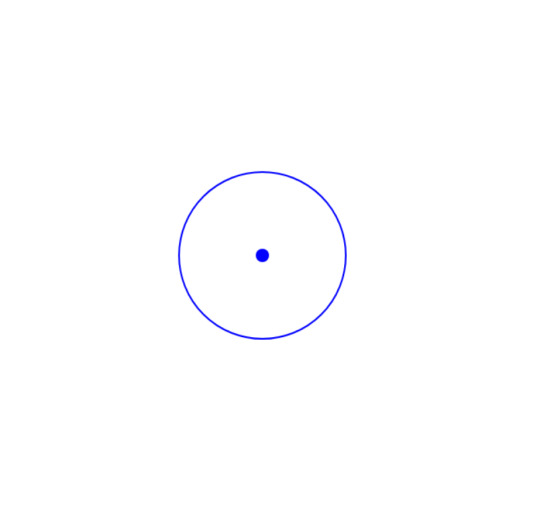

The Noumenal Monad
Within the Polynon framework, nothingness is an undifferentiated cognitive space that precedes geometry and structure. It exists as a pre-geometric source, housing the unformed essence of all phenomena from which spacetime, and all its manifestations, arise. Imbued with primal noumenal potential, it is denoted as the state where all possible realities are latent, waiting to be expressed into an observable world.
A circle whose center is everywhere and circumference is nowhere.
The monad is a geometric construct that acts as a universal grammar of existence, mapping how the boundless noumenal potential transitions into perceptual and phenomenal dimensions while retaining coherence across all levels of manifestation.
The centre being “everywhere” signifies the Monad’s omnipresence as the locus of all potential states, embedded in every point of reality. The circumference being “nowhere” reflects its boundless architecture, transcending the constraints of space, time, and materiality, integrating infinite possibilities within a singular, cohesive structure.
The compactification process begins with the noumenal everything compressing into a singular phenomenal something, reflecting a specific instance or manifestation. This phenomenal something is inherently equal to the noumenal everything because it retains the entirety of noumenal potential, either in its un-collapsed state of infinity or as a collapsed singular “ring” dimension, compacted into a single cognitive focal point.
The only attribute of a point is that it marks position. Take away this attribute and in the unposited point we have a symbol of pure Being, the abstract noumenon, that which underlies every mode of phenomenal manifestation, every form of existence. It is at once All and Nothing, at once Absolute Consciousness and Unconsciousness.
B.W. Betts, Geometric Psychology or the Science of Representation
Or, as Fichte envisioned it, the line symbolizes the progression of consciousness—linear and sequential—while the circle represents its completeness and self-enclosure, encompassing all its dimensions. Thus, both the noumenal everything and the phenomenal something are expressions of the same essence, differing only in their state of manifestation and representation.
Together, they define the Noumenal Monad as a meta-structure that bridges these states of being. It embodies the continuum between the actual and the potential, compacting the infinite diversity of noumenal states into a singular conceptual dimension. This process is geometrically encoded, offering a scaffold for understanding how existence unfolds from an infinite noumenal source into the finite, perceptual realm, while remaining irreducible to either.
Continue reading
#geometrymatters#geometry#philosophy#philosophy of science#plato#kant#spinoza#fichte#consciousness#monism
39 notes
·
View notes
Text

diamonds are forever
#artists on tumblr#photography#astrophotography#astronomy#astro observations#astro community#astrophysics#astronomical observation#astronomical objects#astronomers#cosmos#cosmology#universe#outer space#galaxy#cosmic poetry#mysteries of the universe#science#philosophy of science
71 notes
·
View notes
Text

The Battle for the Truth: Science, Rhetoric, and the Public Sphere
Reality is nothing but a collective hunch. — Lily Tomlin
The pursuit of knowledge is marked by a paradoxical dynamic where systems embodying the principles of scientific inquiry, acknowledging their own incompleteness and embracing the provisional nature of truth, are frequently attacked by counterparts that proclaim absolute certainty yet often lack a foundation in empirical evidence. This phenomenon raises a profound question about why rigorously scientific systems, aware of their limitations, incur criticism from unscientific systems that claim completeness. The underlying reasons for this critique are rooted in epistemological, psychological, and sociological factors that drive this seemingly counterintuitive conflict.
At the heart of scientific systems lies an inherent humility, an acknowledgment of the complexity of the subject matter, and a willingness to revise or even overturn existing theories based on new evidence. This openness is not a sign of weakness but a hallmark of the scientific method, which thrives on skepticism, peer review, and empirical validation. However, this selfsame openness can be misconstrued by critics from closed systems as indecisiveness or uncertainty, providing a perceived foothold for attack. In contrast, closed systems often present themselves as comprehensive and definitive, eschewing the nuanced uncertainties of scientific inquiry for the comforting simplicity of absolute truths. This appeal to certainty resonates deeply with a public frequently overwhelmed by the intricacies of modern life, seeking clear, uncomplicated answers to complex questions.
A significant portion of the critique stems from a fundamental misunderstanding or deliberate misrepresentation of the scientific process. The iterative nature of scientific inquiry, where theories are refined or revised based on new evidence, is often portrayed as flip-flopping or lack of conviction. Critics from closed systems may fail to grasp or choose to obscure the distinction between the provisional nature of scientific knowledge and the method's robustness in approaching truth. Beneath the surface of these critiques often lie power dynamics and ideological differences. Closed systems may perceive scientific findings as a threat to their influence, audience, or worldview, prompting a defensive stance that manifests as attacks on the scientific system's legitimacy. Philosophical disagreements over the nature of truth, the role of empiricism, or the balance between consensus and dissent also fuel these conflicts, highlighting the deeply entrenched nature of these disputes.
To address this paradox, education and awareness are crucial. Enhancing public understanding of the scientific method can foster a broader appreciation for its strengths and the inherent value of acknowledging complexity. Scientists and science communicators must effectively convey the provisional nature of scientific knowledge, highlighting its adaptive and refining aspects as strengths rather than weaknesses. Encouraging respectful, open dialogue between proponents of different systems, while challenging, can facilitate mutual understanding and, in some instances, reconciliation of viewpoints. Strengthening science education and promoting clear communication are key strategies to navigate this paradox, ultimately fostering a more informed, critically thinking society.
The critique of scientific systems by unscientific counterparts underscores a profound misunderstanding of the scientific endeavor. Rather than a vulnerability, the acknowledgment of incompleteness is a badge of honor, reflecting the scientific community's unwavering commitment to the pursuit of truth, no matter how complex or provisional. Embracing education, clear communication, and engaged dialogue becomes paramount, not only for the integrity of scientific knowledge but for the fostering of a society that values critical thinking and the pursuit of knowledge. By navigating this paradox with awareness and strategies aimed at enhancing public understanding and dialogue, we can work towards a future where the scientific method is valued for its strengths, and the provisional nature of truth is seen as a catalyst for continuous learning and improvement.
Marjorie Shapiro: Supersymmetry, Extra Dimensions and the Origin of Mass - Exploring the Nature of the Universe Using PetaScale Data Analysis (Google Tech Talks, June 2007)
youtube
String Theory isn‘t Dead (Sabine Hossenfelder, December 2024)
youtube
The Problem With Sabine Hossenfelder (Professor Dave Explains, October 2024)
youtube
No, Sabine, Science is Not Failing (Professor Dave Explains, November 2024)
youtube
Lawrence Krauss: God, String Theory, and the State of Physics (Robinson Erhardt, March 2024)
youtube
Sabine Hossenfelder Can’t Stop Acting Like a Complete Fraud (Professor Dave Explains, February 2025)
youtube
Wednesday, February 26, 2025
#science#philosophy#epistemology#critique#knowledge#truth#uncertainty#provisionality#scientific method#skepticism#critical thinking#philosophy of science#science communication#public perception#rhetoric#complexity#ambiguity#paradox#intellectual humility#presentations#ai assisted writing#machine art#Youtube#theoretical physics#interview#commentary
7 notes
·
View notes
Text
Book Review: The Case Against Reality
Nima Arkani-Hamed shows up surprisingly rarely in popular science books. A major figure in my former field, Nima is extremely quotable (frequent examples include “spacetime is doomed” and “the universe is not a crappy metal”), but those quotes don’t seem to quite have reached the popular physics mainstream. He’s been interviewed in books by physicists, and has a major role in one popular physics…
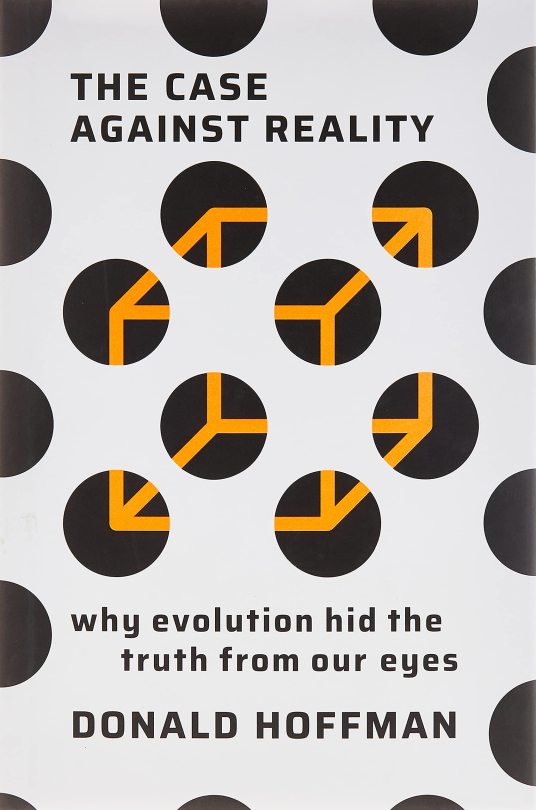
View On WordPress
#book review#particle physics#philosophy of science#psychology#quantum field theory#quantum mechanics#relativity#string theory
42 notes
·
View notes
Text
If your way of thinking is complex, your phrases are gonna be the same. Large, intricate, contradictory at times, ambiguous... That's what literature should be; that's what allows countless interpretations. Good literature reassembles more a joyful game -with its main objective being beauty- than a logical syllogism. Sometimes, this applies even for theories, which are supposed to be quite the contrary, as Occam noted.
#dark academia#light academia#litterature#science#philosophy of science#books and libraries#books and reading#spilled writing#reflection#art#spilled ink#philosophy
9 notes
·
View notes
Text






Karl Popper – Scientist of the Day
Karl Raimund Popper, an Austrian/English philosopher of science, died Sep. 17, 1994, at the age of 92.
read more...
#Karl Popper#philosophy of science#positivism#histsci#histSTM#20th century#history of science#Ashworth#Scientist of the Day
15 notes
·
View notes
Text

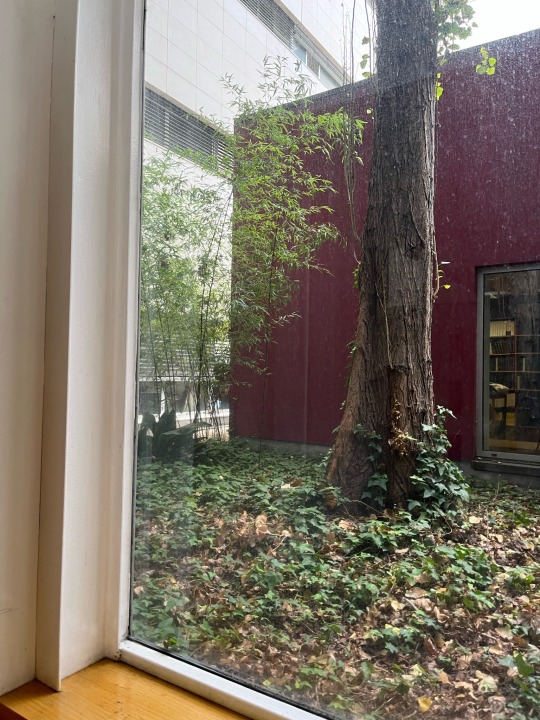


16/10/2023 | Day 2 of 100 days of productivity
Today I got a paper back and despite the good grade, I’m really bummed out because I expected a little more. Regardless, I finished an essay I had due tomorrow, read a little of my current read, and meal prepped for the rest of the week! It was a really decent day 🩷
#academia#chaotic academia#chaotic academic aesthetic#dark academia#philosophy#bookblr#university#studyblr#philosophy of science#history#100 days of studying#100 days of productivity#100 days challenge#MA student#student#study motivation#studyspo#study blog#studybrl
42 notes
·
View notes
Text
Why did no one tell me that Plato's real name was Aristocles.
#philosophy#philosophy of life#dark academia#chaotic academia aesthetic#dark academia aesthetic#dark academic#identity#understanding#existentialism#psychology#meaning#philosophy tube#philosophy of science#philosophy memes#philosophy quotes#self development#quoteoftheday#iwritewhatyoufeel#dark academia moodboard#chaotic academia#academia aesthetic
19 notes
·
View notes
Text
A Sermon for January 15th: A Reading on Preparedness
Brothers and Sisters in the Atom, today’s message begins with an acknowledgment of the practical. While we, as members of the Church of the Atom, contemplate the vast and long-reaching implications of nuclear energy and waste—our legacy for countless generations—it’s important to remember that most of the challenges we face in life are far more immediate. Disasters may not always arrive in the form of a nuclear apocalypse, but they can still strike without warning, leaving us vulnerable. Floods, fires, hurricanes, power outages, car breakdowns, and even a sudden injury can upend our lives in an instant.
Preparedness is not just a lofty or distant ideal; it is a practical, day-to-day expression of care. It is how we honor our responsibility to ourselves, our loved ones, and our communities. In this spirit, we turn to a reading from Ready.gov, a resource that provides essential knowledge for safeguarding against the unexpected.
A Reading from Ready.gov: Preparedness Basics
"Disasters can strike without warning, disrupting lives, displacing families, and leaving communities in turmoil. By taking small steps now, you can ensure safety and security for yourself and your loved ones in the future."
Emergency Kits: The Foundation of Preparedness
An emergency kit is more than just a box of supplies; it is your lifeline when normal systems fail. A good kit should last at least three days and include:
Water: One gallon per person per day for drinking and sanitation.
Food: Non-perishable items such as canned goods, energy bars, and dry foods, along with a manual can opener.
Tools and Lighting: A flashlight with extra batteries, multipurpose tools, and a crank-powered or battery-operated radio.
First Aid Kit: Bandages, antiseptic, necessary medications, and any required medical devices.
Hygiene Supplies: Soap, hand sanitizer, moist towelettes, and other sanitation items.
Clothing and Warmth: Sturdy shoes, extra clothing, and blankets or sleeping bags.
Important Documents: Copies of IDs, insurance policies, and bank information in a waterproof container.
Cash and Coins: Small denominations for situations where electronic payments are unavailable.
Special Items: Supplies for children, elderly family members, and pets, including formula, diapers, and pet food.
Developing a Plan
Preparedness is more than a kit—it’s a mindset. Develop a plan to ensure everyone in your household knows what to do in an emergency. Establish an out-of-town contact for communication and choose a meeting place for reunification. Practice drills to make the plan second nature.
Everyday Uses for Preparedness
Emergencies don’t always come with fanfare. A flat tire in the middle of nowhere, a power outage during a storm, or even an unexpected illness can test our ability to respond. A well-stocked emergency kit and a thought-out plan make these everyday disasters manageable. Being prepared isn’t just for the unthinkable—it’s for the inevitable.
Reflection on Preparedness
Brothers and Sisters, the Church of the Atom teaches us to look both to the infinite and the immediate. While we are committed to the long-term legacy of nuclear semiotics—ensuring that future generations heed the warnings of our age—we must not neglect the more mundane yet equally important task of ensuring our present safety.
Preparedness is practical, yes, but it is also a sacred duty. When we prepare, we acknowledge that the future matters, that life is precious, and that we are responsible not just for ourselves but for those who depend on us. By preparing, we reflect the values of stewardship, foresight, and care that lie at the heart of our faith.
Think of your emergency kit as an act of love—love for yourself, for your family, and for your community. When you build it, you are not just collecting supplies; you are making a promise to those around you that their safety is your priority.
But preparedness is not a solitary endeavor. Share this knowledge with your neighbors, friends, and family. Strengthen your community’s resilience by encouraging others to create their own kits and plans. Consider joining or supporting a local Community Emergency Response Team (CERT). You can find more information and opportunities to get involved at Ready.gov.
A Warning from the Atom
While our message today emphasizes everyday preparedness, let us not forget the unique guidance of our faith: to avoid the places where the atom’s power has left a dangerous legacy. Nuclear waste storage facilities, marked with the unmistakable trefoil, are not places of curiosity or exploration. They are warnings in themselves—symbols of danger that transcend language and culture. As stewards of this knowledge, we must ensure these places are avoided, respected, and understood as hazardous for generations to come.
Closing Words
As you go forth this week, I urge you to take this sermon to heart. Build your emergency kit if you haven’t already. Update your family’s communication plan. Take practical steps toward readiness not out of fear but out of love and responsibility.
Remember, preparedness is not just for the end of the world—it is for every day. By acting now, you protect the lives and futures of those you hold dear.
And as always, may the energy of the atom guide us—toward safety, toward wisdom, and toward a future of hope and preparedness.
#nuclear semiotics#nuclear science#philosophy of science#religion#science#science and spirituality#faith#nuclear history#spirituality#preparedness#emergency#emergency preparedness#prep#prepping#prepper#safety#radiation safety
4 notes
·
View notes
Text
Daniel Dennett (1942 - 2024)
Many of us today woke up to a world that felt a little less vibrant, a little less intellectually stimulating. Daniel Dennett, a philosopher who revolutionized our understanding of the mind, science, and consciousness, passed away yesterday. Daniel Dennett, image taken from Wikipedia For me, Dennett was a guiding light in his study field. His work, particularly his early books “Content and…
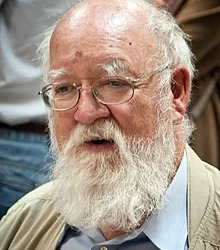
View On WordPress
#academia#Artificial Intelligence#biology#cognitive science#computationalism#consciousness#cultural commentator#Daniel Dennett#Darwin#free will#mental processes#Mind#multiple drafts model#naturalistic approach#nature of reality#philosopher#Philosophy#philosophy of mind#philosophy of science#Raffaello Palandri#science#wisdom
14 notes
·
View notes
Text

Best Regards
The Physics Book Misunderstood The Solar System Geometry Basics
or
or
or
Preface
In following I compare between the physics book vision about the solar system motion and the solar system facts-the comparison refutes many physics basic theories.
1st Refutation (Space Nature and Properties)
Einstein told (Space Has No Mechanical Features)- Einstein is wrong
Space has mechanical features – let's prove
Planet motion produces energy (1/2 mv^2) but where's this motion energy? Planet can NOT store its motion energy inside its body because It would raise its temperature- and no planet temperature is raised by its motion- logically- planet motion energy is stored in the space as moving waves –Means- planet motion in space is similar to a fish swimming in the sea- the fish swimming creates waves in the sea and Planet motion energy creates waves in the space- Shortly- planet motion creates waves in the space and these waves move by its planet velocity- for example- Mercury moves by (47.4 km/s) and Mercury motion energy creates waves in the space and these waves move by velocity (47.4 km/s)- I want to say- it's simple to prove the space mechanical features because planet motion energy has no place to store in except the space.
2nd Refutation (The Gravitational Waves Source)
The physics book tells (The Gravitational Waves Are Produced By The Gravitational Field)- this is wrong idea – because-
The Gravitational Waves Are Produced By Planet Motion Energy let's explain that The space is similar to the sea of water and any motion in the space produces energy and this energy is stored as waves in the space- means- any motion in the space creates waves in the space-
Planet motion produces energy (1/2 mv^2) and this energy creates waves in the space-
and these waves move by its planet velocity- means- Planets move and their motions create waves in the space and each wave moves by its planet velocity- AND the planets revolve around the sun in the same one direction for that their motions energies create waves in the space and these waves move perpendicular on the revolution direction (Toward Pluto orbit) AND in Pluto orbit these waves are unified together into one unified wave- this unified wave moves by a velocity= 205.8 km/s because The 9 planets velocities total=176 km/s but I add the Earth moon velocity (29.8 km/s) that makes the total to be 205.8 km/s – I add the moon velocity because the energy is stored finally in the moon orbit- This Unified Wave Is The Gravitational Waves –
AND- the gravitational waves are reflected three times in the solar system – from Neptune to Saturn (1st reflection) and from Uranus to Jupiter (2nd reflection) and from Venus to Mars (3rd reflection)
The scientists discovered these waves in the space and they called them (gravitational waves) supposing these waves are produced by the gravitational field but Planet motion energy analysis proves these waves must be produced by Planet motion energy- also there's No proof for the idea tells (the sun produces a gravitational field)
3rd Refutation (No Planet Moves By The Sun Gravity)
Newton told (Planet Moves By The Sun Gravity)
Newton was wrong – No Planet Moves By The Sun Gravity- Also-The Surprised Fact tells (The Sun Is A Phenomenon Created By The Planets Motions Energies)- means- the planets were found and revolving in their orbits before the sun creation and the sun is created after all planets creation and motion with long period of time! (CONT)
Gerges Francis Tawdrous +201022532292
Physics Department- Physics & Mathematics Faculty
Peoples' Friendship university of Russia – Moscow
Curriculum Vitae https://www.academia.edu/s/b88b0ecb7c
E-mail [email protected], [email protected]
ORCID https://orcid.org/0000-0002-1041-7147
Facebook https://www.facebook.com/gergis.tawadrous
VK https://vk.com/id696655587
Tumblr https://www.tumblr.com/blog/itsgerges
Livejournal https://gerges2022.livejournal.com/profile
Pocket https://getpocket.com/@646g8dZ0p3aX5Ad1bsTr4d9THjA5p6a5b2fX99zd54g221E4bs76eBdtf6aJw5d0?src=navbar
box https://app.box.com/s/47fwd0gshir636xt0i3wpso8lvvl8vnv
Academia https://rudn.academia.edu/GergesTawadrous
publications http://vixra.org/author/gerges_francis_tawdrous
Slideshare https://www.slideshare.net/Gergesfrancis
#tagitables#philosophy#henri poncairé#henri poncaire#poncairé#poncaire#protagoras#philosophy of science#ancient greek philosophy#reason#Asteroid#Astrophysics#atom#atomic#atomic nuclei#big bang#black hole#Black holes#Building#Color#Composition#computer#cosmos#Dark#dark matter#energy#flash#form#Forms#Fraction
2 notes
·
View notes
Text

wrong answers to wrong questions
#artists on tumblr#photography#photographer#photooftheday#picture#photograph#astronomy#sky#moon#full moon#clouds#night#philosophy#philosophical thought#questions and answers#philosophy of science#philosopher#philosophy and poetry#rights and wrongs#magical atmosphere
75 notes
·
View notes
Text
How to Use Quantum Computing as a Tool for Philosophy of Science
Recently, I attended the MCQST 2023 Conference on which Lídia del Rio presented the research with her collaborators about quantum thought experiments in a quantum computer. They wrote a whole package to do this and describe the ideas in detail in [1]. It's definitely worth checking out the paper and the package - to make you curious let us look at an illustrative example [1, p.4-10].
Example Setting

Let us consider the following setting (as depicted in the image above): Alice has some two-level quantum system R (e.g. a qubit) in the state written in blue. Thus, the probability of obtaining a=0 in a measurement is 1/3 while the result a=1 will be obtained with a probability 2/3. Depending on the outcome, Bob receives the a system in state |0> (if Alice's result was a=0) or in state |+> ~ |0>+|1> (if Alice's result was a=1). In turn, Bob measures his system in the computational basis and can receive the outcome b=0 or b=1. What conclusions can Bob draw about Alice's measurement outcomes based on his? It is assumed that Bob knows the rules upon which Alice sends him the different systems. Thus, if his outcome is b=0 he cannot make any retrodiction since the outcome b=0 could stem from both possible states |0> and |+>. However, if he measures b=1 he knows that his state must have been in |+> and thus he can retrodict that Alice's outcome must have been a=1. Therefore, in one of both cases Bob can draw a deterministic conclusion about Alice's outcome.
So far so good, at this point I'd like to mention that even though this setup seems to be motivated by the Frauchiger-Renner Thought Experiment, we will not talk about apparent paradoxes or fundamental questions in foundations of quantum mechanics themselves. Instead the setting is supposed to be easy to grasp and can therefore neatly serve the purpose to illustrate how a thought experiment can be formalized in terms of quantum circuits. Hence, we will discuss a tool which can be used for quantum thought experiments in general by using a simple example.
Alice's and Bob's Brains in a Quantum Circuit
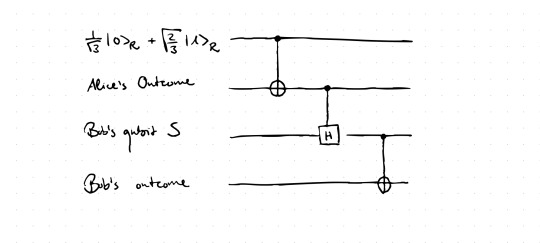
Next, we will translate this specific setting as a quantum circuit - by going through the above illustration of the resulting circuit. The first qubit is initialized in the state of Alice's system R. Even though this seems to be the only true quantum system at hand, we will act as if there was an external observer who looks at both Alice and Bob and their respective systems. Imagine you are in the position of this external observer and set the Heisenberg cut at this point: You are classical while both Alice and Bob are quantum (as it is done in Neo-Copenhagen interpretations). Then, one also has to model the "brains"/"memory" of both Alice and Bob. We start with Alice first: we assign a wire of the circuit to Alice's reasoning which basically means that somehow the possible measurement results are stored in this respective qubit. The wire representing her memory is initialized in state |0> and is connected to her system R via a CNOT gate. This means that if the system R was in state |0>, the qubit representing Alices would stay in |0>. However, if R was in |1>, Alice's state of memory would be in |1> as well. This way, one can model different measurement outcomes and also Alice's memory in a unitary manner without explicitly including measurements in the circuits yet. This is necessary since from our external perspective everything about Bob and Alice is considered to be quantum, i.e. must be modelled unitarily. Now, we can look at the third wire: It is again initialized in state |0> and remains in this state if Alice's memory is in state |0>. However, the controlled Hadamard will act on the third wire if Alice's memory is in state |1>, hence it would be turned into state |+>. Thus the controlled Hadamard models the system S which Bob receives - conditioned on Alice's measurement outcome of R. Finally, the last wire is again initialized in |0> and is supposed to model Bob's memory. Exactly as Alice's memory, also the relation between Bob's memory and his system S is modeled via a CNOT gate.
As a result we now have a quantum circuit which represents the setup from above from an external perspective. I think already at this point one can see the beauty of this approach - while one needs quite a lot of sentences to explain the simple setup, it can very easily be grasped by the neat quantum circuit. What is left to do now is to model Bob's reasoning regarding his retrodiction on Alice's outcome. We found that Bob can draw a deterministic conclusion about Alice's measurement outcome if his outcome is b=1, in the other case he cannot draw such a conclusion. How can this be mapped into a quantum circuit?
Modelling Bob's reasoning
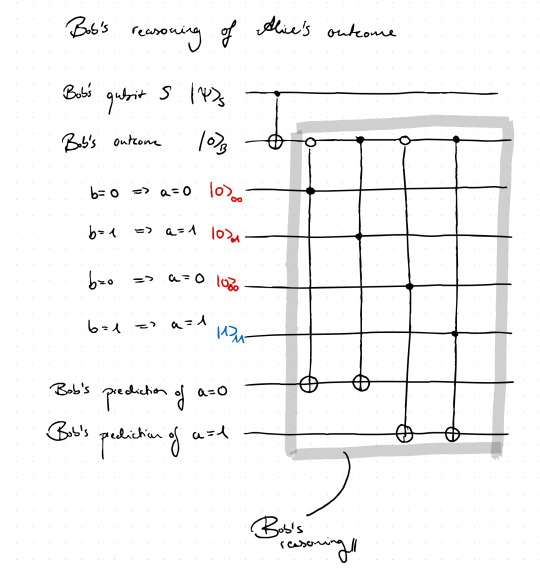
In the above circuit we added a couple of additional wires. One set represents the four possible logical inferences in this case, and the last two wires will show what Bob's prediction will be based on the initialized inferences. Let's go through this step by step: There are four possible inferences on the measurement outcomes a and b, but only one of them is assumed to hold, namely (b = 1 -> a=1), which is why only the wire corresponding to this inference is initialized in state |1>. The other three inferences, which are assumed not to hold, are initialized in |0> and since there are control nodes from the nonlocal Toffoli-type on those wires, they will not really contribute as long as one does not change the initialization. Those Toffoli-type gates have two control nodes each as well as a NOT at the lower end. One control node is placed on Bob's memory qubit, acting dependently on the outcome b and represents the antecedent of each possible inference. If the inference of a wire assumes b=1 the corresponding Toffoli node on Bob's memory will be black, while it will be white for b=0. The second control node of each Toffoli gate is black in order to be activated according to which inference is initialized with state |1>. The consequent of those inferences is modeled by the lowest two wires. The NOT of each Toffoli is placed on the corresponding wires representing the consequent. Looking at the Toffoli for the inference b=1 -> a=1, one can see that if Bob's memory is in |1> and simultaneously the wire of the corresponding inference is initialized as |1> as well, the NOT on the lowest wire will turn the respective state to |1> (the prediction wires are initialized in |0>). Thus, Bob's prediction can be read off by the states of the prediction wires. Finally, one can also run this circuit and check its consistency - how?
Consistency Checks

In the above image we have put together all we got so far: Alice's actions from before, as well as bob's actions and his reasoning as discussed right above. The consistency of such a model can be checked by measuring the prediction wires as well as Alice's memory qubit. In this case, the only deterministic inference will show itself if Bob's prediction wire for a=1 will be |1> and this will coincide with Alice's memory being in |1>. For the other case, no inference can be done. This way one can check the consistency of the model and if the results show paradoxical outcomes one knows that something went wrong, that something in the logical reasoning / adopted interpretation of quantum theory is getting problematic. Having everything formalized as a quantum circuit will make the analysis of the issues easier.
Final Remarks
It appears to me that Quantum Circuits are not used here because one expects some computational advantage by running them on a Quantum Computer - instead they are used to neatly formalize subsystems and possible inferences of thought experiments. This way, thought experiments can be made more clear and transparent as well as it is easier to see the problem if the outcomes are not consistent. Therefore, their work shows that quantum circuits have a much broader field of application - it is not only about striving for some kind of quantum advantage for specific decision problems, instead they can also be used to formalize concepts in foundations of quantum mechanics; and this is something I have never thought about before, which is why I am so fascinated by the idea.
---
References: [1] Nurgalieva, Mathis, del Rio, Renner - Thought experiments in a quantum computer. arXiv:2209.06236
#physics#mysteriousquantumphysics#quantum physics#studyblr#physicsblr#science#education#quantum#philosophy of science#philosophy#quantum computing
112 notes
·
View notes
Text
Some more abstract thoughts about the debate over future colliders:
4 notes
·
View notes